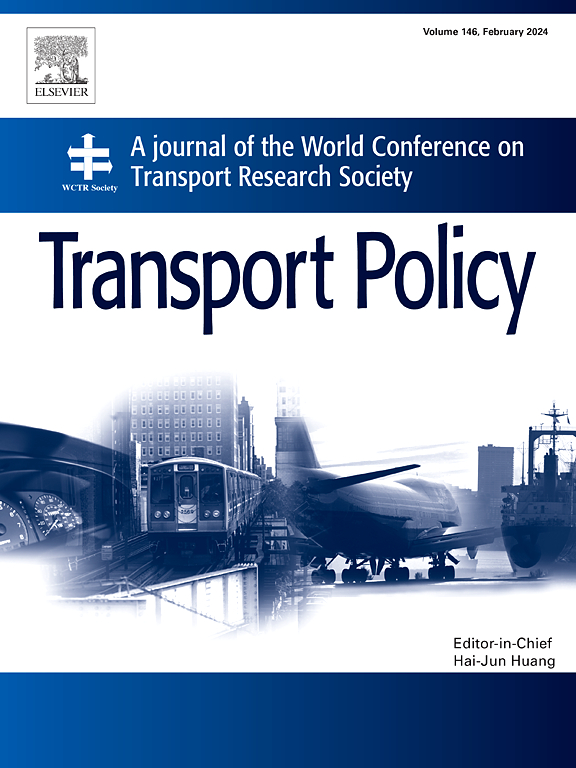The impact of the China-ASEAN Open Skies Agreement on bilateral air transport
IF 6.3
2区 工程技术
Q1 ECONOMICS
引用次数: 0
Abstract
This paper applies simultaneous equation model to investigate the impact of China-ASEAN Open Skies Agreement (CAOSA) on bilateral air transport using annual panel data spanning 2011 to 2019. Results show that CAOSA significantly increased both flight frequency and air passenger volume between China and ASEAN. Further heterogeneity analyses find that: (1) Compared to new ASEAN members, the positive effects on flight frequency and air demand are more pronounced between China and old ASEAN members. (2) CAOSA significantly increases flight frequency or air passenger volume in the Pearl River Delta and Yangtze River Delta regions, while no statistically significant impact is found on the Beijing-Tianjin-Hebei region. (3) CAOSA significantly increases the flight frequency of China first-tier cities, and no significantly impact is found on China second-tier cities. (4) CAOSA has significantly positive impact on flight frequency and air passenger volume of medium- and long-haul air routes, while has no significantly impact on short-haul routes. Our findings are valuable complements to existing research on open skies, offering significant policy implications for the government and the industry.
中国-东盟开放天空协定对双边航空运输的影响
本文利用2011 - 2019年的年度面板数据,应用联立方程模型研究了中国-东盟开放天空协定(CAOSA)对双边航空运输的影响。结果表明,中国与东盟之间的航班频次和航空客运量均显著增加。进一步的异质性分析发现:(1)与东盟新成员国相比,中国与东盟老成员国对航班频次和航空需求的正向影响更为显著。(2) CAOSA显著提高了珠三角和长三角地区的航班频次或航空客运量,而对京津冀地区没有显著影响。(3) CAOSA显著增加了中国一线城市的航班频次,对中国二线城市的影响不显著。(4) CAOSA对中长途航线的航班频次和航空客运量有显著的正向影响,而对短途航线的影响不显著。我们的发现是对现有开放天空研究的有价值的补充,为政府和行业提供了重要的政策启示。
本文章由计算机程序翻译,如有差异,请以英文原文为准。
求助全文
约1分钟内获得全文
求助全文
来源期刊

Transport Policy
Multiple-
CiteScore
12.10
自引率
10.30%
发文量
282
期刊介绍:
Transport Policy is an international journal aimed at bridging the gap between theory and practice in transport. Its subject areas reflect the concerns of policymakers in government, industry, voluntary organisations and the public at large, providing independent, original and rigorous analysis to understand how policy decisions have been taken, monitor their effects, and suggest how they may be improved. The journal treats the transport sector comprehensively, and in the context of other sectors including energy, housing, industry and planning. All modes are covered: land, sea and air; road and rail; public and private; motorised and non-motorised; passenger and freight.
 求助内容:
求助内容: 应助结果提醒方式:
应助结果提醒方式:


